Special Report
What Prisoners Get Paid for Forced Labor in Every State
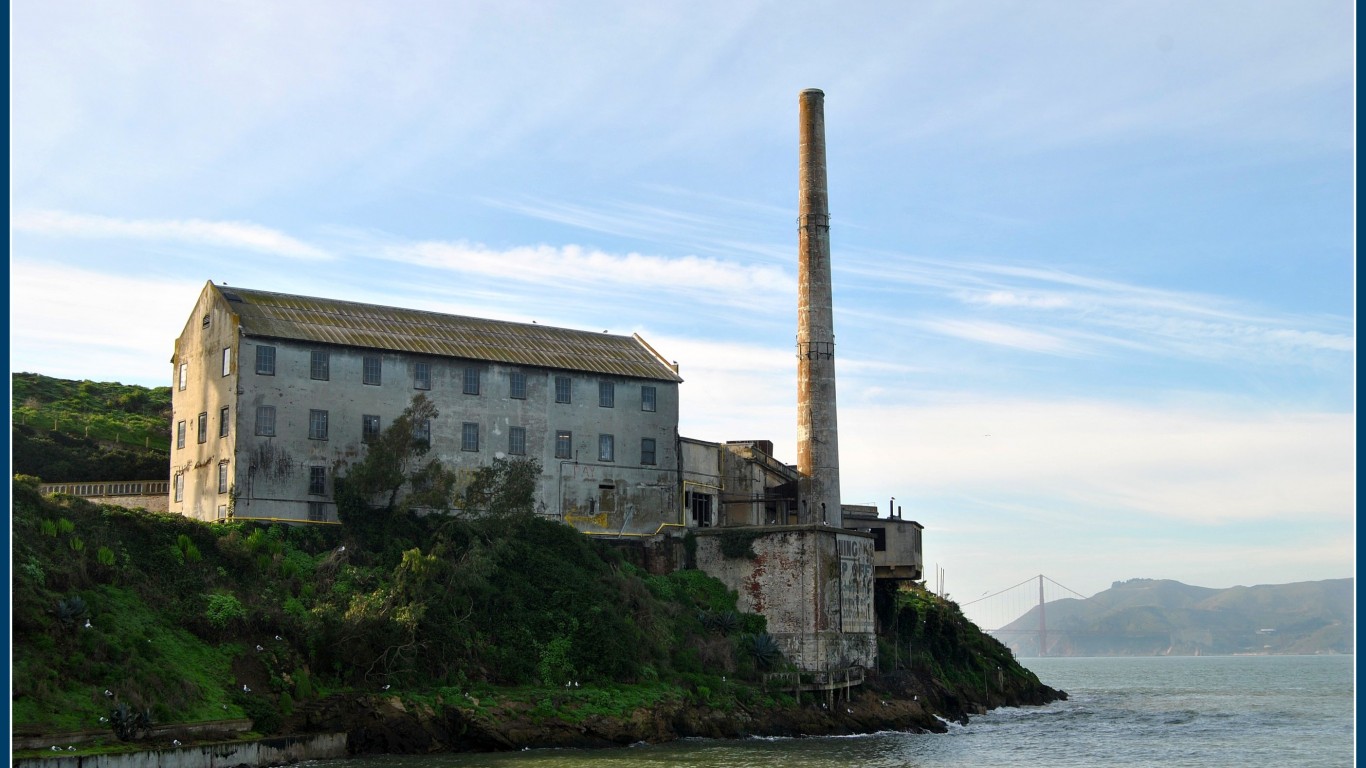
Published:
Last Updated:

Like many who fall afoul of the law, Tarra Simmons was born and raised in a taxing household environment from which few would succeed. She dropped out of school at 13 and gave birth at 15. In 2011, she was sentenced to 30 months in prison for several charges. It was in prison that, under threat of solitary confinement, she says was coerced into working for cents per hour.
After cleaning up her act, obtaining a law degree, and establishing a nonprofit to help ex-convicts, Simmons was elected to the Washington State House of Representatives in 2020. Tapping her experience as a former inmate worker, Simmons sponsored the Real Labor, Real Wages Act earlier this year that would raise inmate income to the state’s minimum hourly wage. Washington’s current hourly wage floor is $15.74. The federal minimum wage is $7.25 an hour.
The American Civil Liberties Union estimates that about 1.2 million people are incarcerated in state and federal prisons, and that nearly two-thirds of those incarcerated are workers – with many paid nothing for their work. The U.S. has the world’s highest incarceration rate, according to the Prison Policy Initiative, at about 664 per 100,000 people. (Here are 23 famous cases of wrongful imprisonment in America.)
The Thirteenth Amendment of the U.S. Constitution prohibits slavery and involuntary servitude, except as a form of punishment for people convicted of crimes. Eight state constitutions have their own provisions that permit inmate slavery or involuntary servitude, and eight other states prohibit slavery but allow inmates to be paid pennies on the hour for their labor, often using non-physical threats, including losing visit and phone privileges and earned time off that lengthens their sentences. (Also see, these are the states with the most people on death row.)
To identify the extent of the U.S. prison economies, 24/7 Wall St. reviewed the report, Captive Labor: Exploitation of Incarcerated Workers from the ACLU and Global Human Rights Clinic of The University of Chicago The Law School for the year 2022. The twenty states with the highest number of prisoners who are also working are listed here, along with the pay scales for non-industry prison jobs and jobs in state-owned correctional industries.
The average pay scale for prisoners working non-industry jobs nationwide is 13 cents to 52 cents per hour. Non-industry jobs include some skilled or specialized work assignments, but mostly support the operation of the prison facilities, including jobs such as cooks, dishwashers, janitors, groundskeepers, barbers, painters, or plumbers. Such jobs are generally compensated at the lower end of the non-industry pay scales. More than 80% of prison jobs are maintenance work.
State-owned correctional industries jobs include sign and license plate manufacturing, meat and milk processing, optical and dental laboratories, and recycling and metal shops, among others. Such jobs constitute about 65% of prison jobs and generally pay higher wages with a national average of 30 cents to $1.30 per hour.
Click here to see the US prison economies.

20. West Virginia
> Incarcerated workers: 1,010
> Pay scale, non-industry jobs: $13 to $71 per month
> Pay scale, jobs in state-owned correctional industries: $0.25 to $1.25 per hour
The state has the 17th highest incarceration rate in the country, higher than El Salvador and Turkmenistan, countries with the second and third highest incarceration rates after the United States, according to the Prison Policy Institute. West Virginia operates a “unique blend of business and government” through West Virginia Correctional Industries, which touts teaching “good work habits” to state inmates.
[in-text-ad]

19. New Hampshire
> Incarcerated workers: 1,244
> Pay scale, non-industry jobs: $0.85 to $3.00 per day
> Pay scale, jobs in state-owned correctional industries: $1 to $5 per day
The state’s department of corrections assigns jobs in five categories: prison operations like kitchen and laundry work, warehouse services; farm work; a so-called “hobbycraft” program for building furniture; and education, which is available as a work category for student inmates or prisoners pursuing addiction treatment, according to a New Hampshire Public Radio report from 2019. The state has the third-lowest incarceration rate in the U.S.
18. North Dakota
> Incarcerated workers: 1,505
> Pay scale, non-industry jobs: $1.55 to $7.07 per day
> Pay scale, jobs in state-owned correctional industries: $0.45 to $1.79 per hour
In 2015, North Dakota legislators traveled to Norway to learn lessons from its success in educating and rehabilitating inmates. But there are many differences in how Norwegians deal with the issue. The country’s per capita incarceration rate is also a 10th the size of the U.S. rate, and it has one of the world’s lowest recidivism rates. If prisoners choose to work in jobs maintaining the facilities, they earn between $7 to $8 a day, according to Prison Insider.
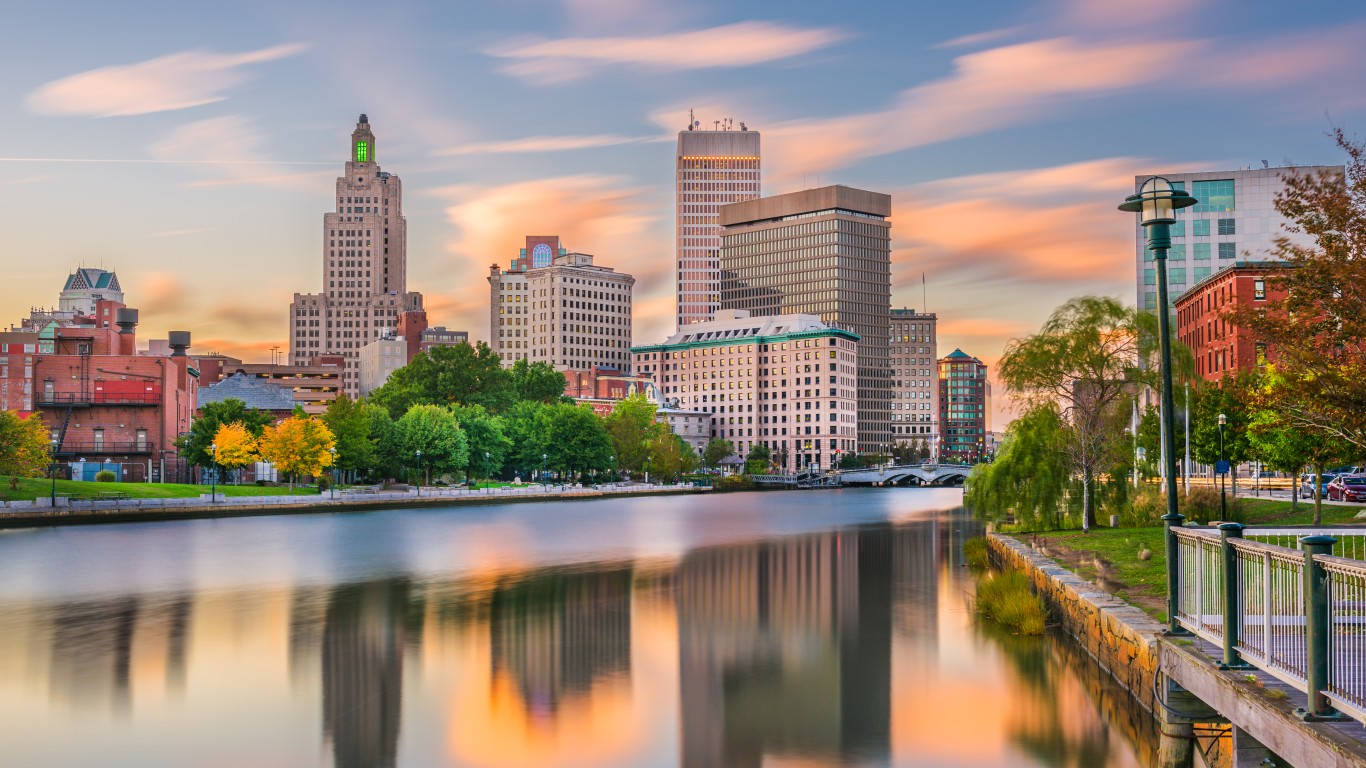
17. Rhode Island
> Incarcerated workers: 2,163
> Pay scale, non-industry jobs: $0.50 to $3.00 per day
> Pay scale, jobs in state-owned correctional industries: $1.50 to $3.00 per day
In 2013, Rhode Island passed a law requiring all government institutions to buy furniture from the Department of Corrections. The state’s incarceration rate is below the national average but is about the same as the southern African country of Namibia.
[in-text-ad-2]

16. Nebraska
> Incarcerated workers: 3,092
> Pay scale, non-industry jobs: $1.21 to $4.72 per day; $0.38 to $1.50 per hour
> Pay scale, jobs in state-owned correctional industries: $0.38 to $1.08 per hour
Before 2020, not only did jailhouse jobs in Nebraska not pay for the labor, but also prisoners were compelled to work for free as part of the disciplinary process under threat of losing time off for good behavior and lengthening their sentences, according to the Lincoln Journal Star. Like other states, Nebraska’s department of corrections has a system under which inmates produce goods such as furniture, street signs, and soap products for a fraction of the state’s $10.50 hourly minimum wage.
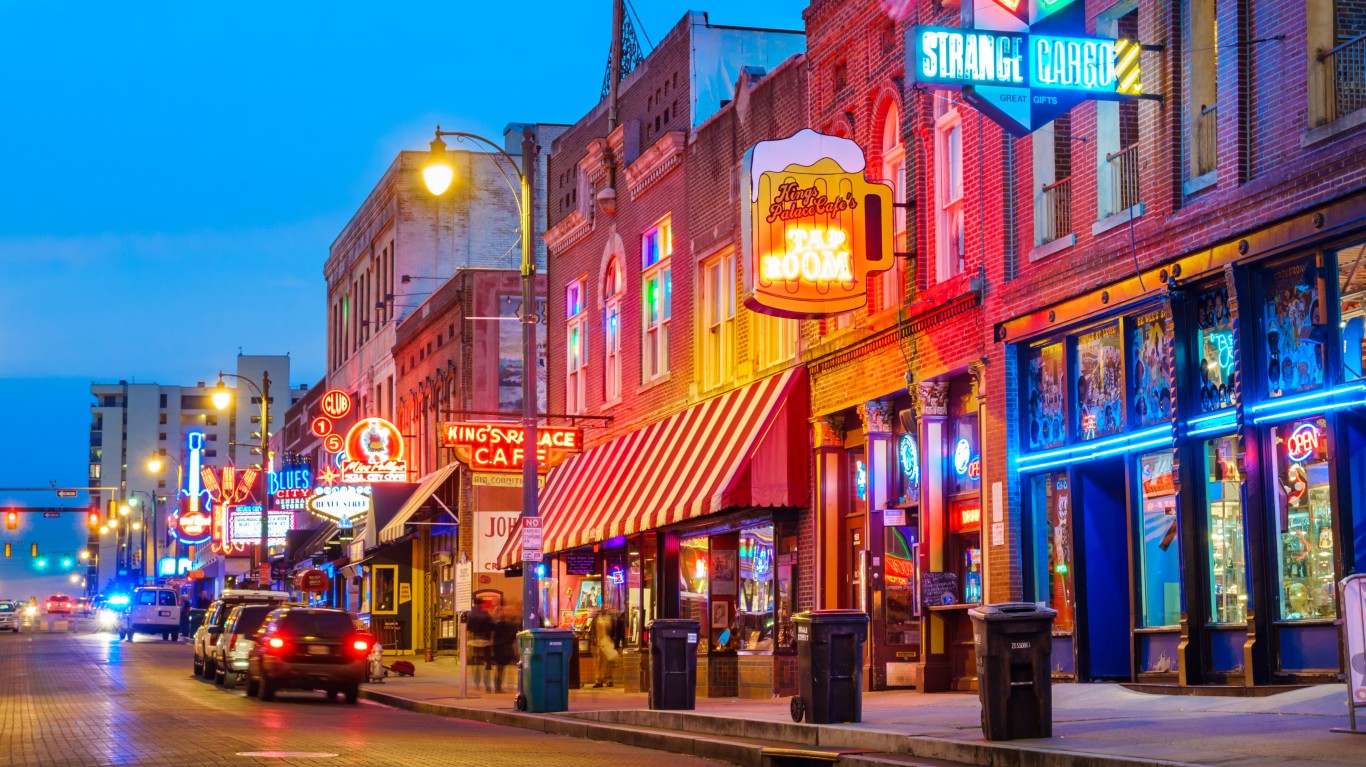
15. Tennessee
> Incarcerated workers: 7,724
> Pay scale, non-industry jobs: $0.17 to $0.59 per hour
> Pay scale, jobs in state-owned correctional industries: N/A
In November, Tennessee voters approved with a strong majority a ballot measure to amend the state constitution that officially bans all forms of slavery, a move that impacts prisoners the most by prohibiting involuntary servitude. The measure passed despite opposition from six legislators that voted against the measure, CBS News reported. “I’m a non-lawyer and most of my voters are non-lawyers and I can’t explain this amendment in words they understand,” Republican State Sen. Frank Niceley said in 2021.
[in-text-ad]
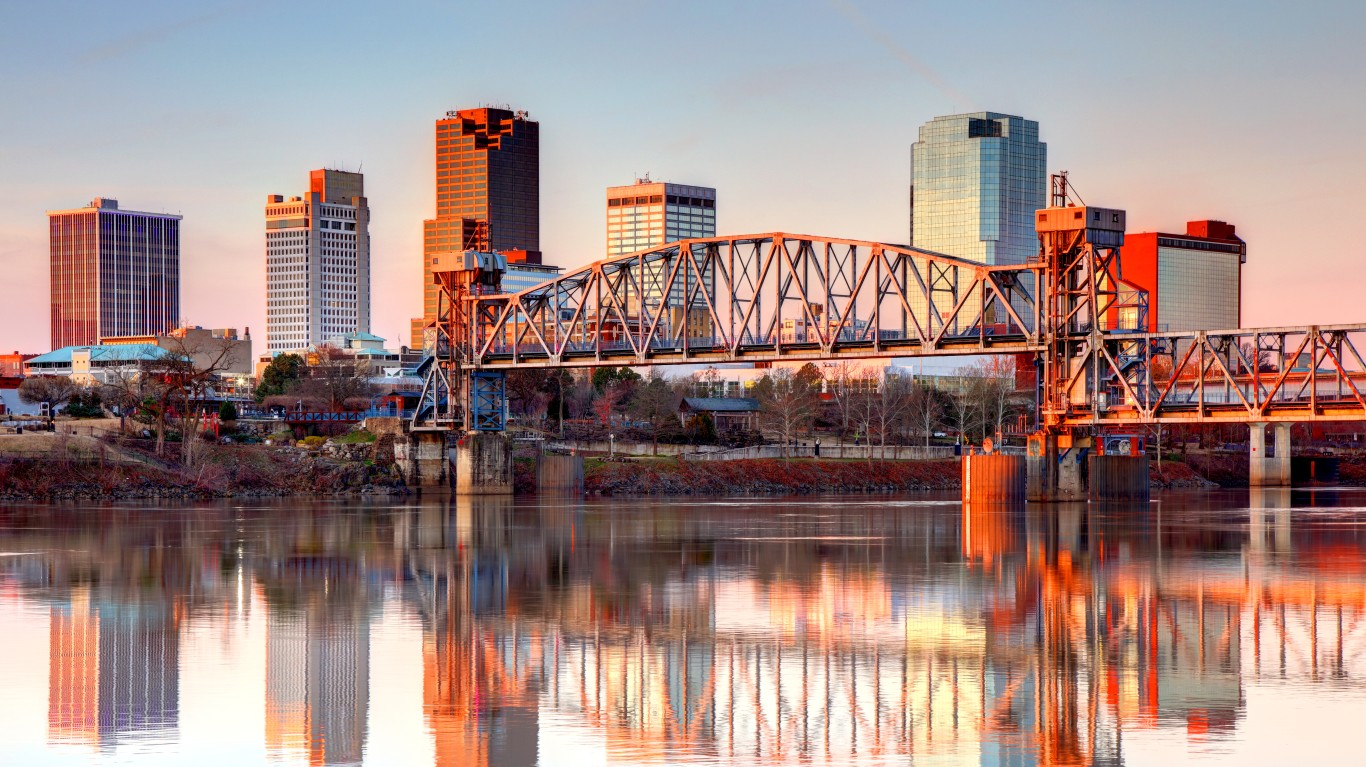
14. Arkansas
> Incarcerated workers: 7,837
> Pay scale, non-industry jobs: 0
> Pay scale, jobs in state-owned correctional industries: 0
Arkansas has the fifth-largest per-capita incarceration rate in the country despite ranking 33rd in population. In 2020, a measure that would have removed language in the state’s constitution permitting involuntary servitude or slavery as “punishment for crime” failed to make it onto the ballot. As of February 2022, eight states allow slavery or involuntary servitude as a form of punishment, according to Ballotpedia.
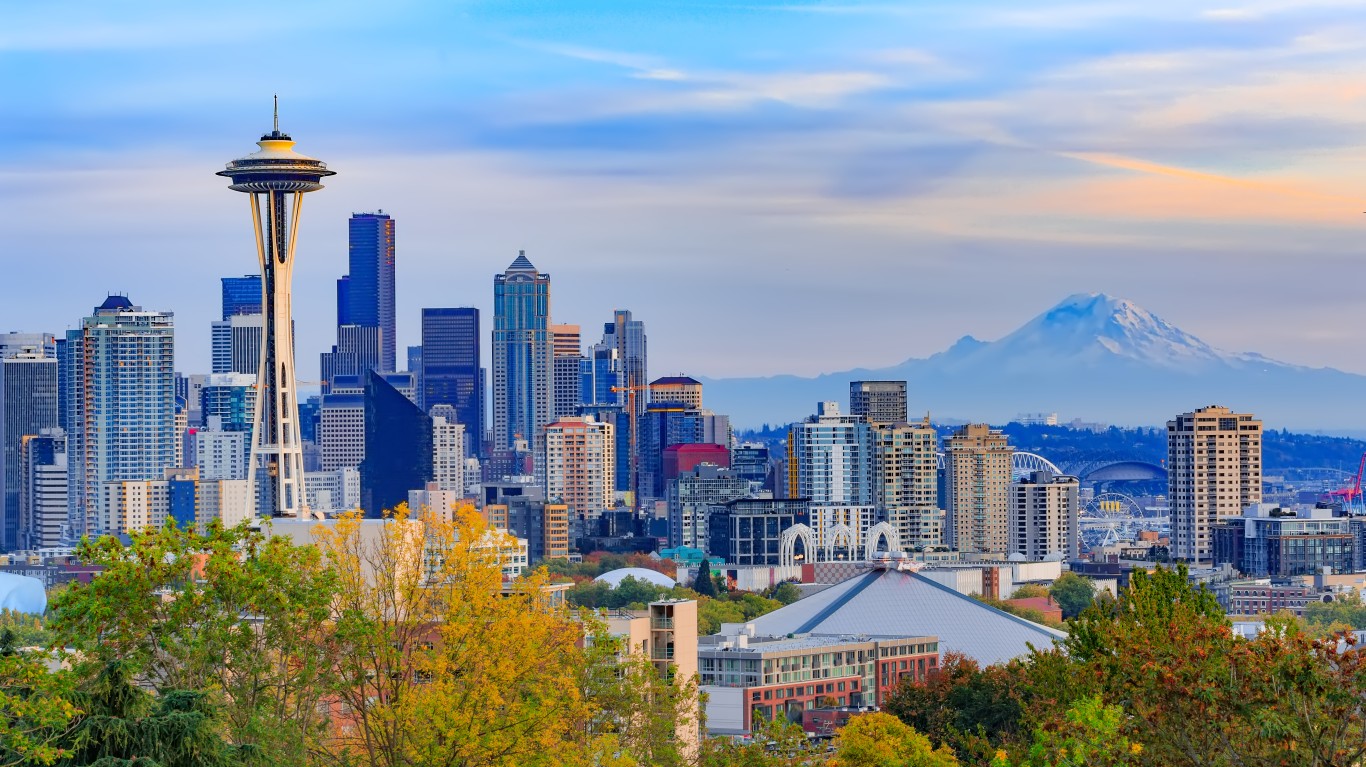
13. Washington
> Incarcerated workers: 8,392
> Pay scale, non-industry jobs: No more than $55 per month
> Pay scale, jobs in state-owned correctional industries: $0.70 to $2.70 to hour
Like all but 15 states, Washington has a constitutional article permitting slavery or involuntary servitude as a form of punishment. In January, Democratic State Rep. Tarra Simmons proposed raising prisoner wages to the state’s $15.74 hourly minimum wage. Simmons, the state’s first formerly incarcerated elected lawmaker, said in January she had been subjected to threats of solitary confinement if she refused to work for 42 cents an hour.
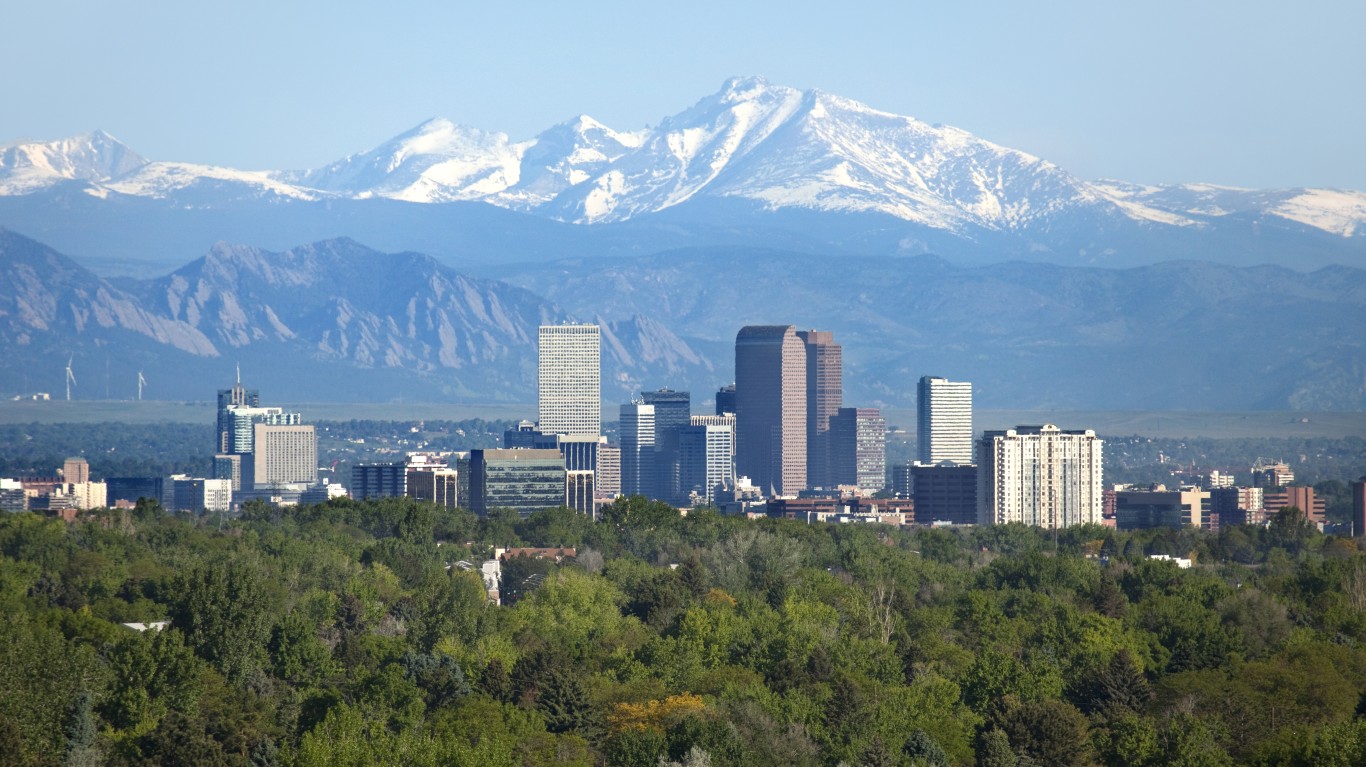
12. Colorado
> Incarcerated workers: 10,392
> Pay scale, non-industry jobs: $0.33 to $1.61 per hour
> Pay scale, jobs in state-owned correctional industries: $0.86 to $2.49 per hour
A state Court of Appeals ruled in August 2022 that Coloradans who voted in 2018 to make slavery and involuntary servitude unconstitutional did not intend to extend that protection to inmates. The ruling allows the Colorado Department of Corrections to continue to coerce inmates with “restricted privileges” if they do not agree to work. Last year, the state passed a law requiring prisoners who work in transitional day release programs to be paid the state’s hourly minimum wage of $13.65. However, only a fraction of Colorado inmates participate in the program.
[in-text-ad-2]

11. North Carolina
> Incarcerated workers: 13,142
> Pay scale, non-industry jobs: $0.40 to $1.00 per day
> Pay scale, jobs in state-owned correctional industries: No more than $3.00 per
day
North Carolina inmates repair roads, raise crops and cattle, work in construction and textiles, make road signs, furniture, and license plates, and are contracted out to local governments to perform clerical duties. “Money earned by the inmates helps defray the costs of their imprisonment, pays restitution to victims and helps support their family,” says a state government website. North Carolina is one of eight states whose constitution allows involuntary servitude, but not slavery, as a form of punishment.

10. Maryland
> Incarcerated workers: 13,242
> Pay scale, non-industry jobs: $0.90 to $2.75 per day
> Pay scale, jobs in state-owned correctional industries: $0.17 to $1.16 per hour
Maryland pays inmates based on skill levels, with the highest “craftsman” earning the maximum hourly wage of $2.75, well below the state’s standard minimum wage of $13.25 an hour. In 2020, the Baltimore Sun reported that the state spent $7.68 million on wages to about 13,200 inmates annually within the Department of Corrections and Maryland Correctional Enterprises, a program that utilizes inmate labor to make products for state agencies.
[in-text-ad]
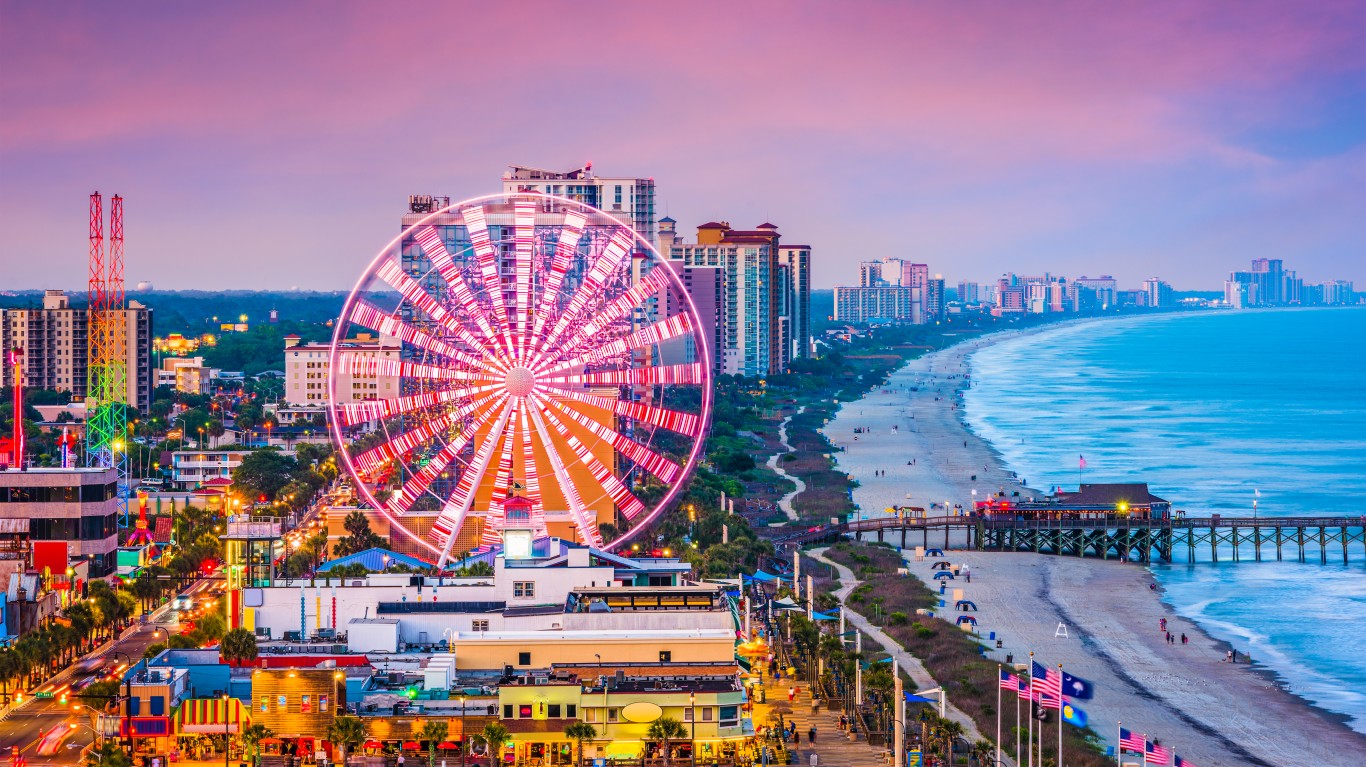
9. South Carolina
> Incarcerated workers: 14,786
> Pay scale, non-industry jobs: $0 for nearly all jobs
> Pay scale, jobs in state-owned correctional industries: $0 to $2.00 per hour
One example of the private sector’s use of cheap prison labor is at South Carolina’s Evans Correctional Institution, where inmates produce cable and harnesses for a Missouri-based company that sells these products to British defense giant BAE Systems, according to a Vice Motherboard report in 2021. Prisoners who work in state public-private “enterprise programs” like this tend to earn the highest inmate wages. But what they earn is still below what a comparable worker would earn outside of prison.
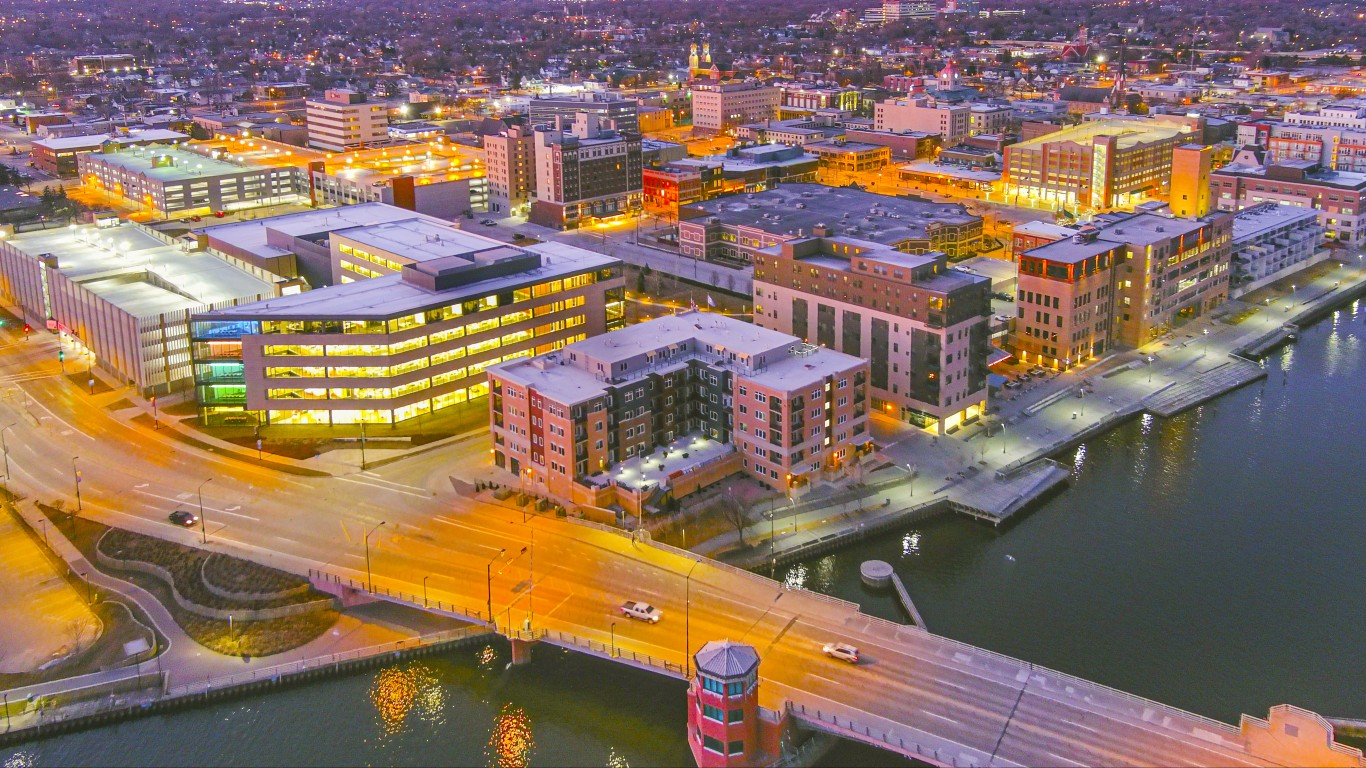
8. Wisconsin
> Incarcerated workers: 15,724
> Pay scale, non-industry jobs: $0.12 to $0.42 per hour
> Pay scale, jobs in state-owned correctional industries: $0.97 per hour on average
Wisconsin’s prison enterprise program was established in 1913, a time in U.S. history when prison chain gangs and convict leasing (a form of unpaid forced labor utilized by private interests like coal mines and plantations) were common in many parts of the country. In 2021, the Madison-based Badger Herald student newspaper profiled a former inmate who worked for the state’s prison enterprise program for five years stuffing envelopes, beginning at 42 cents an hour and ending at $1 an hour making traffic signs.

7. Virginia
> Incarcerated workers: 16,000
> Pay scale, non-industry jobs: $0.27 to $0.45 per hour
> Pay scale, jobs in state-owned correctional industries: $0.55 to $0.80 per hour
Like all but 16 states, Virginia does not have a constitutional provision that carves out an exception for slavery and/or involuntary servitude. But like most states, Virginia still vastly underpays inmate workers. In 2020, the Virginia chapter of the ACLU estimated that 58% of Virginia inmates are Black despite making up only 20% of the state population.
[in-text-ad-2]
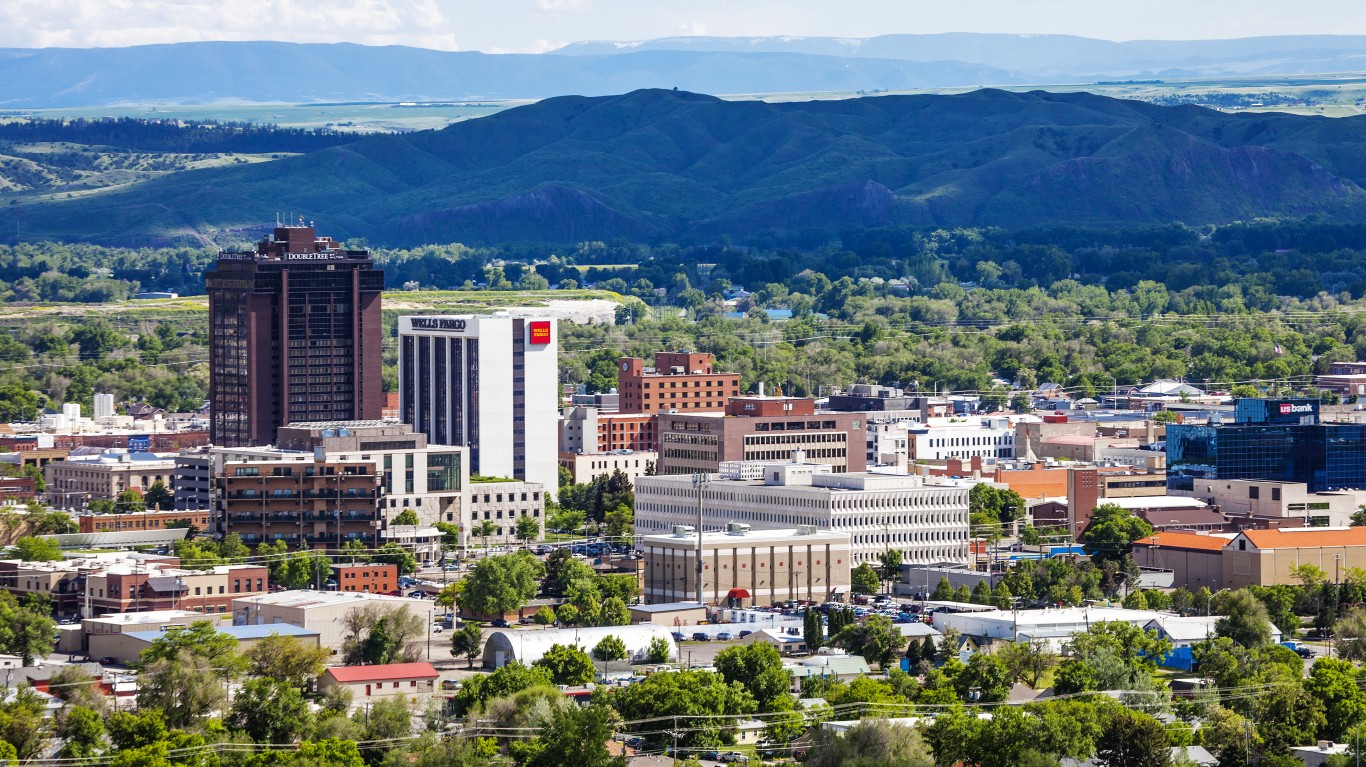
6. Montana
> Incarcerated workers: 16,430
> Pay scale, non-industry jobs: $0.35 to $0.45 per hour, $1.25 to $4.50 per day
> Pay scale, jobs in state-owned correctional industries: $0.40 to $0.60 per hour, $1.70 to $5.00 per day
Many Montana inmates work in agriculture, producing food for the prison system. About 85% of the milk they harvest ends up in consumer refrigerators, according to a 2018 report from Marketplace. Montana collects 15% of inmate wages earned through its public-private enterprise program to pay for court-ordered obligations or the state’s crime victims’ compensation fund, and they collect charges for prisoner room and board.
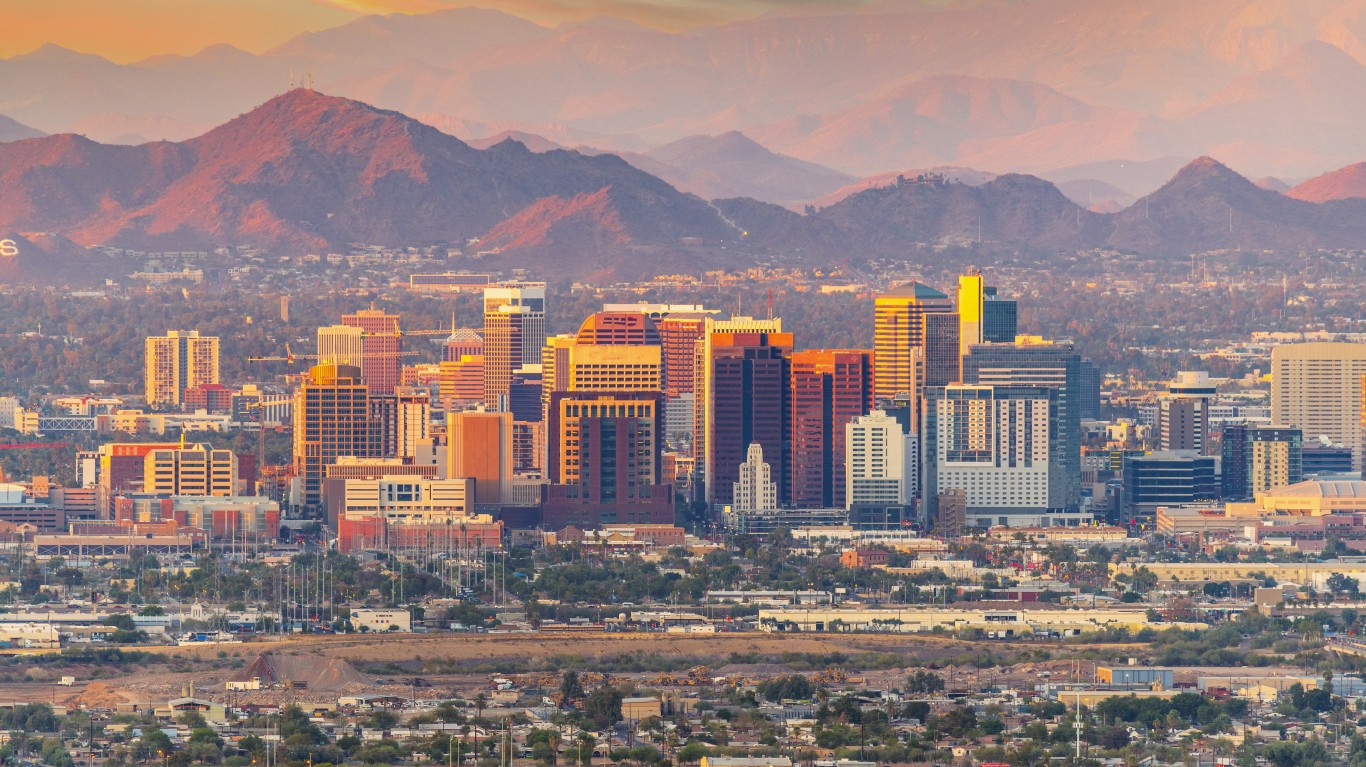
5. Arizona
> Incarcerated workers: 18,097
> Pay scale, non-industry jobs: $0.15 to $0.45 per hour
> Pay scale, jobs in state-owned correctional industries: $0.23 to $1.00 per hour
Arizona has the nation’s eighth-highest per capita incarceration rate, almost double that of Thailand, which has nearly ten times the population. An investigative report published last year from the Arizona Republic and local KJZZ News found that prisoner labor had become “ubiquitous across the state,” used for projects like private home renovations, church confessional boxes, and even bowling alleys. The inmates were told to keep out of sight of staff and students “so no one knows they’re there.”
[in-text-ad]

4. Pennsylvania
> Incarcerated workers: 30,491
> Pay scale, non-industry jobs: $0.19 to $0.51 per hour
> Pay scale, jobs in state-owned correctional industries: $0.19 to $0.51 per hour
The state’s Department of Corrections touts itself as a “pioneer in United States prison labor.” It began to suggest replacing torture and mutilation as forms of punishment in 1682, and in 1773 built its first jail. The state’s incarceration rate is about the same as the national average. Last year, Dr. Zane Kaleem, assistant director of the Correctional Health Care Task Force at Physicians for Criminal Justice Reform, criticized the state’s $5 medical co-pay that can require a prisoner to work up to 26 hours to pay for one visit.

3. New York
> Incarcerated workers: 31,000
> Pay scale, non-industry jobs: $0.10 to $0.33 per hour
> Pay scale, jobs in state-owned correctional industries: $0.16 to $0.65 per hour
In the midst of the COVID-19 pandemic panic of 2020, Gov. Andrew Cuomo introduced “New York State Clean,” a hand sanitizer produced by prisoners and distributed to businesses and government buildings during a nationwide shortage of virus-killing products. Cuomo’s successor, Gov. Kathy Hochul, recently proposed reconstituting private prison labor, a move that would reverse a century-old ban on private employment of inmates in New York state.
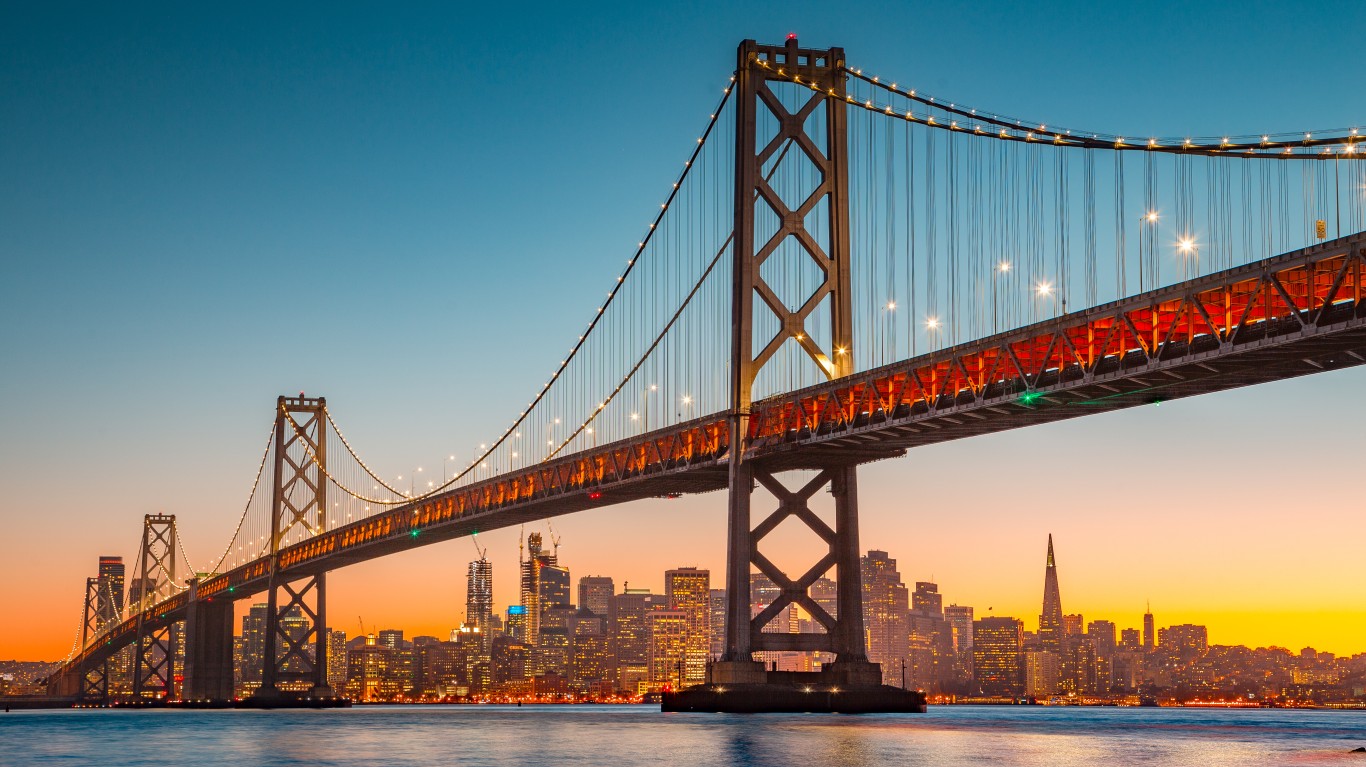
2. California
> Incarcerated workers: 64,788
> Pay scale, non-industry jobs: $0.08 to $0.37 per hour
> Pay scale, jobs in state-owned correctional industries: $0.35 to $1.00 per hour
California is one of eight states whose constitution allows involuntary servitude, but not slavery, as a form of punishment. Efforts last year by some state assembly members to end forced prison labor failed to win enough legislative support. The state’s Department of Finance, which opposed the measure, said it would cost $1.5 billion to pay inmates the state’s hourly minimum wage, which increased to $15.50 at the start of the year.
[in-text-ad-2]

1. Texas
> Incarcerated workers: 121,247
> Pay scale, non-industry jobs: 0
> Pay scale, jobs in state-owned correctional industries: 0
The second-largest state by population has the 10th largest per capita incarceration rate in the country, at 840 per 100,000 people in 2021, or 53% more than the country’s most-populous state, California, at 549 per 100,000 people. This is why Texas has nearly double the number of prison workers as California’s. According to a 2021 report in the San Antonio Express News, Texas Correctional Industries, the state’s for-profit prison enterprise system that was established in 1963, raises more than $70 million a year from labor that is outsourced to prisoners by private companies.
If you’re one of the over 4 Million Americans set to retire this year, you may want to pay attention.
Finding a financial advisor who puts your interest first can be the difference between a rich retirement and barely getting by, and today it’s easier than ever. SmartAsset’s free tool matches you with up to three fiduciary financial advisors that serve your area in minutes. Each advisor has been carefully vetted, and must act in your best interests. Start your search now.
Don’t waste another minute; get started right here and help your retirement dreams become a retirement reality.
Thank you for reading! Have some feedback for us?
Contact the 24/7 Wall St. editorial team.